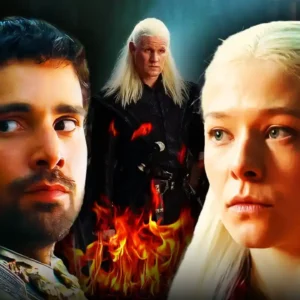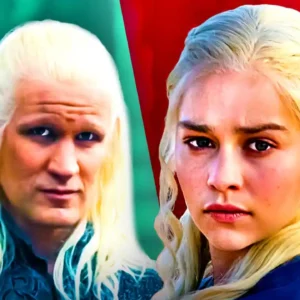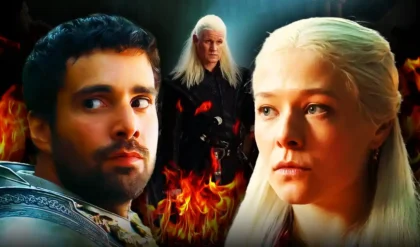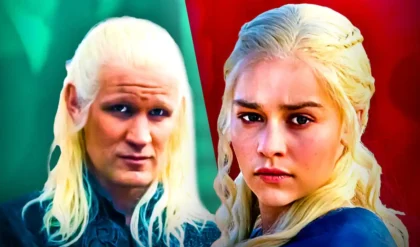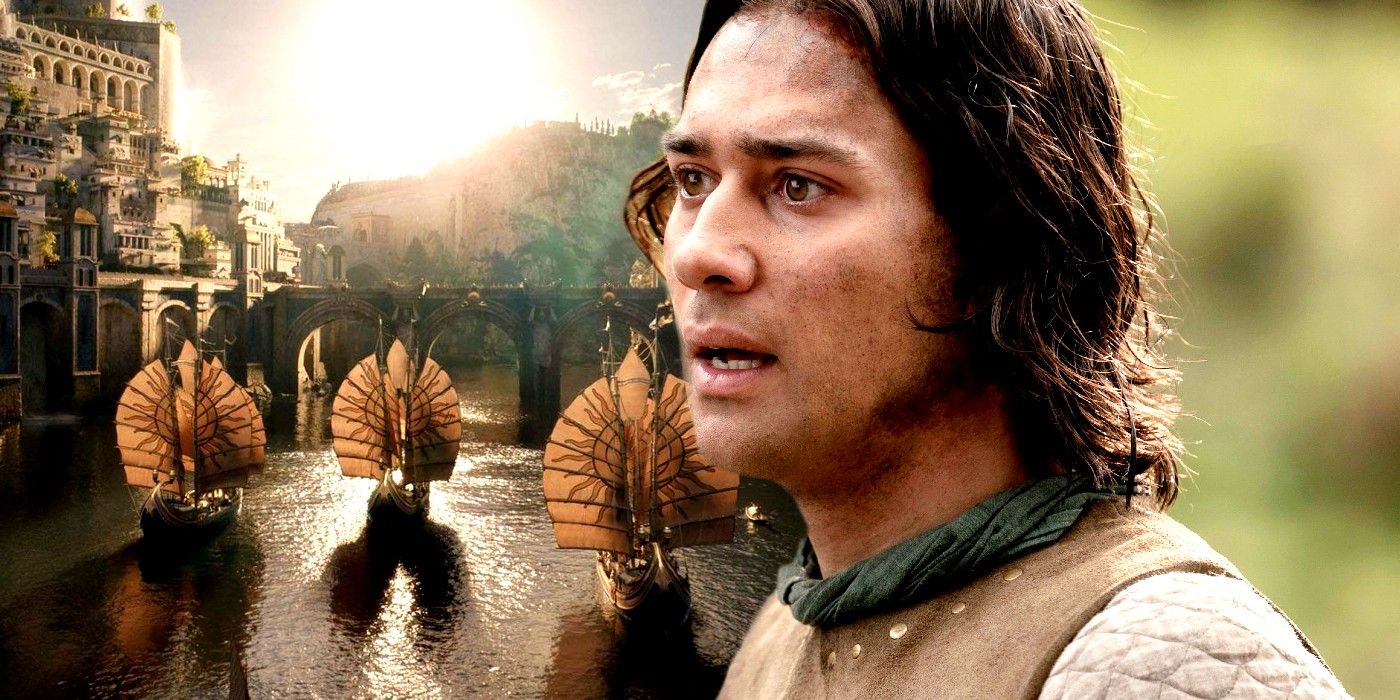
Viewers who are only familiar with Peter Jackson’s film trilogy may recognize the name of Númenor, but the location itself will have come as something of a surprise. One of the greatest civilizations in the history of Middle-earth, it was settled by the Edain – Middle-earth’s first humans, who sided with the Valar in the battle against Morgoth, the first Dark Lord. The Valar raised the island from the depths as a reward for the Edain’s loyalty, and the Númenoreans were originally ruled by Elrond’s brother, Elros. But already, there have been hints of Númenor’s fate.
Númenor’s Feud Between Pharazôn & The Faithful Explained
There was A Schism In Númenor
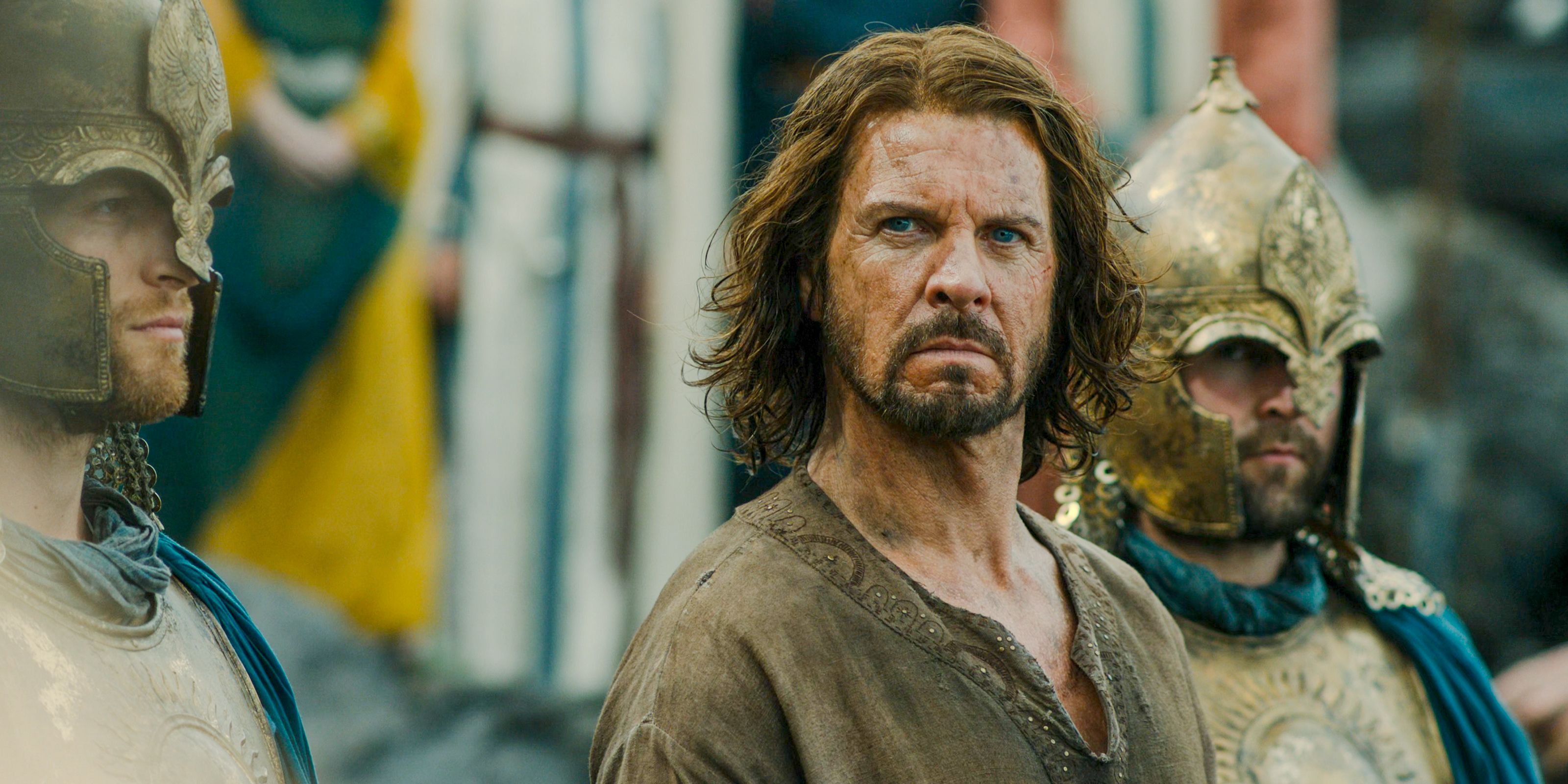
The Rings of Power shows a divided Númenor, but this schism began quite some time before the events of the show. In The Rings of Power, Míriel ruled Númenor and represents the dying embers of a group of Númenóreans called the Faithful. On the other hand, Pharazôn represents an opposing group of Númenóreans. The Faithful adhere to the ancient and traditional Númenórean values of friendship with the Elves and loyalty to Tolkien’s demigods, the 15 Valar, who live with many Elves on the continent west of Númenor. Pharazôn doesn’t even believe in the Valar.
Númenor was actually a gift from the Valar and the Valar didn’t do anything to warrant Númenórean hate. However, that was so long ago, and the Valar interfere in human affairs so little, that belief in these mythical beings is all but dead on the island kingdom in the show. Opposition to the Valar and Elves began with envy of their immortality, breeding resentment and distrust. Elendil and his family are not just members of the Faithful but are descended from the line of Elros, making them Númenórean royalty, despite being far from in line to the throne.
Pharazôn Leads His Army To Middle-earth & Fights Against Sauron
Sauron Feared Númenor
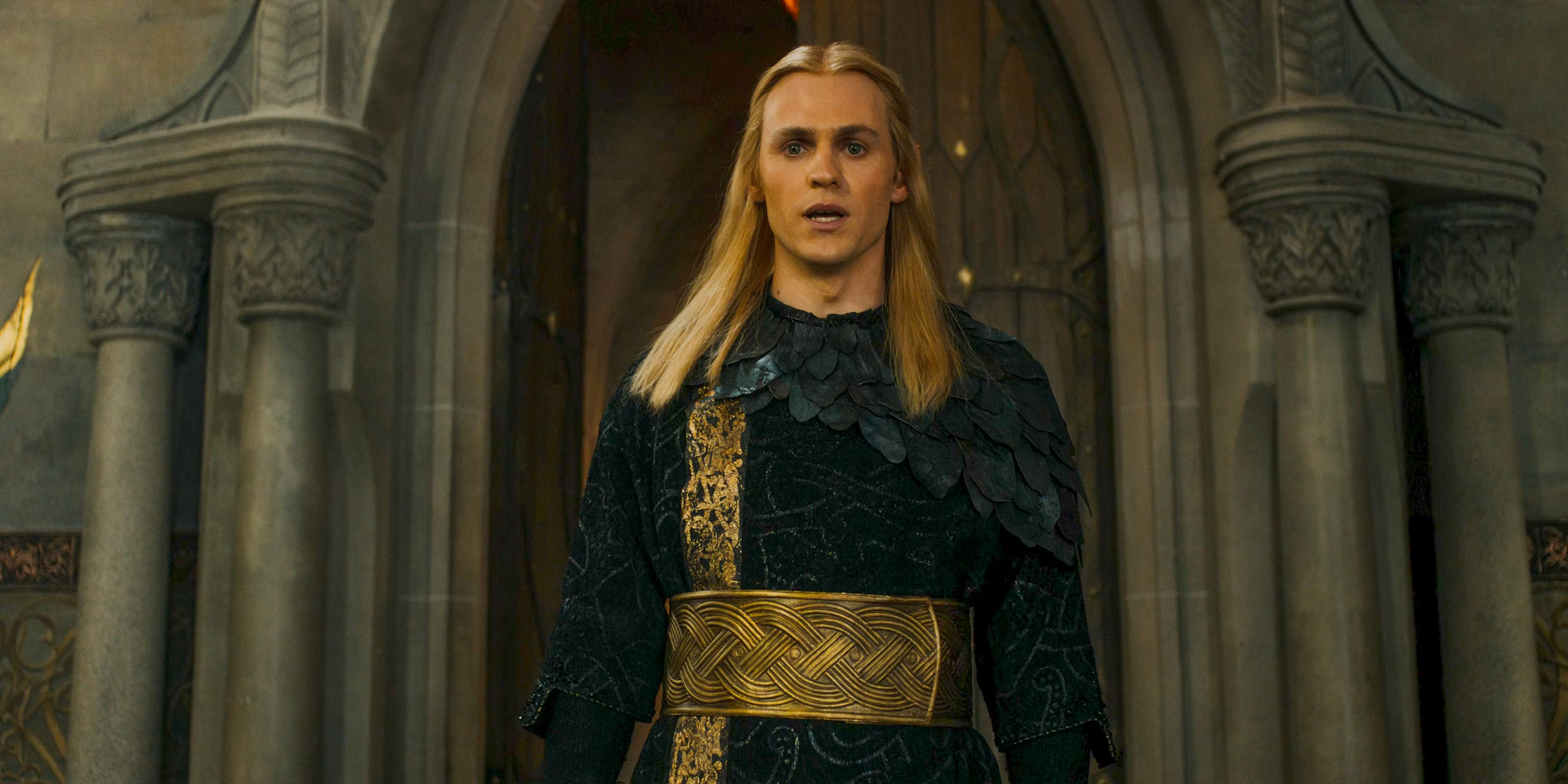
Pharazôn is soon to be subject to a conflicting storyline in The Rings of Power, if lore is anything to go by. Sauron commented in Rings of Power that he feared Númenor, and as per his manipulative modus operandi, this was no lie. In J.R.R. Tolkien’s The Silmarillion, Sauron and Númenor both reached a high point in their power at around the same time and started hearing about each other’s success. This was emphasized in Sauron’s case in The Rings of Power, as he ended up there accidentally after being picked up at sea, and was impressed.
Hearing of Sauron’s plans to invade, Pharazôn thought to make the first move in The Silmarillion and sailed to Middle-earth and commanded Sauron come and swear fealty to him. Sauron couldn’t match Pharazôn’s army and wanted to dominate Númenor with wit, not force. So, Sauron willingly went with Pharazôn. Within three years, he was the king’s closest counselor. This was testament to Sauron’s incredible intelligence and wisdom, gained over tens of thousands of years.
When The Fall Of Númenor Happens
Númenor Falls At The End Of The Second Age, Around When Sauron Is Defeated
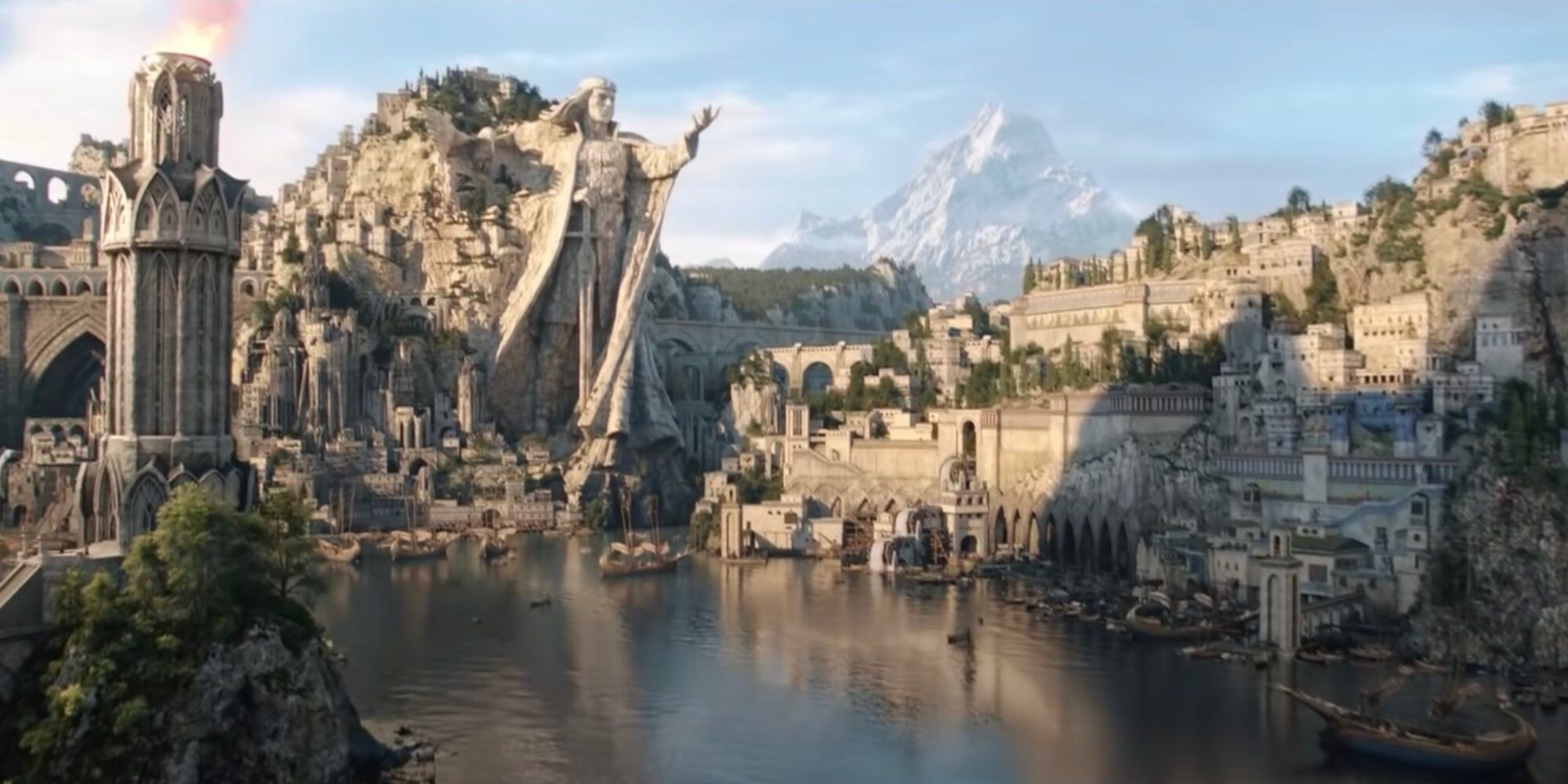
The Fall of Númenor is one of the most important events in the history of Middle-earth, a cataclysm that marks the end of the Second Age. It’s difficult to place it in relation to the current events of The Lord of the Rings: The Rings of Power, simply because the timeline has clearly been adjusted. Showrunner Patrick McKay recently addressed this, explaining the Tolkien estate was concerned with “the principle of the narrative flow and the sequence of events, not the dates.” (via New York Times)
The Rings of Power‘s timeline is compressed, meaning everything is happening much faster than J.R.R. Tolkien intended. Nonetheless, according to McKay, the flow of events will be the same: “The rings are made here, there’s a war between Sauron and the elves after that, later Sauron is taken to Númenor, Númenor falls, Gondor is established… Does it matter if a hundred or 500 years passed between those events? No.”
The Lord of the Rings is supposed to take place over 3,000 years after the Fall of Númenor, and it runs until the end of Middle-earth’s Third Age. Again, it is difficult to say whether the timeline is imagined as matching up with J.R.R. Tolkien’s intentions. Events may continue to flow at an accelerated rate in Amazon’s Lord of the Rings timeline, meaning there could well be less of a dramatic gap between The Lord of the Rings: The Rings of Power and the War of the Rings seen in Peter Jackson’s movies.
How & Why Pharazôn Causes The Fall Of Númenor
Pharazôn Is Tricked By Sauron Into Sailing Against Valinor
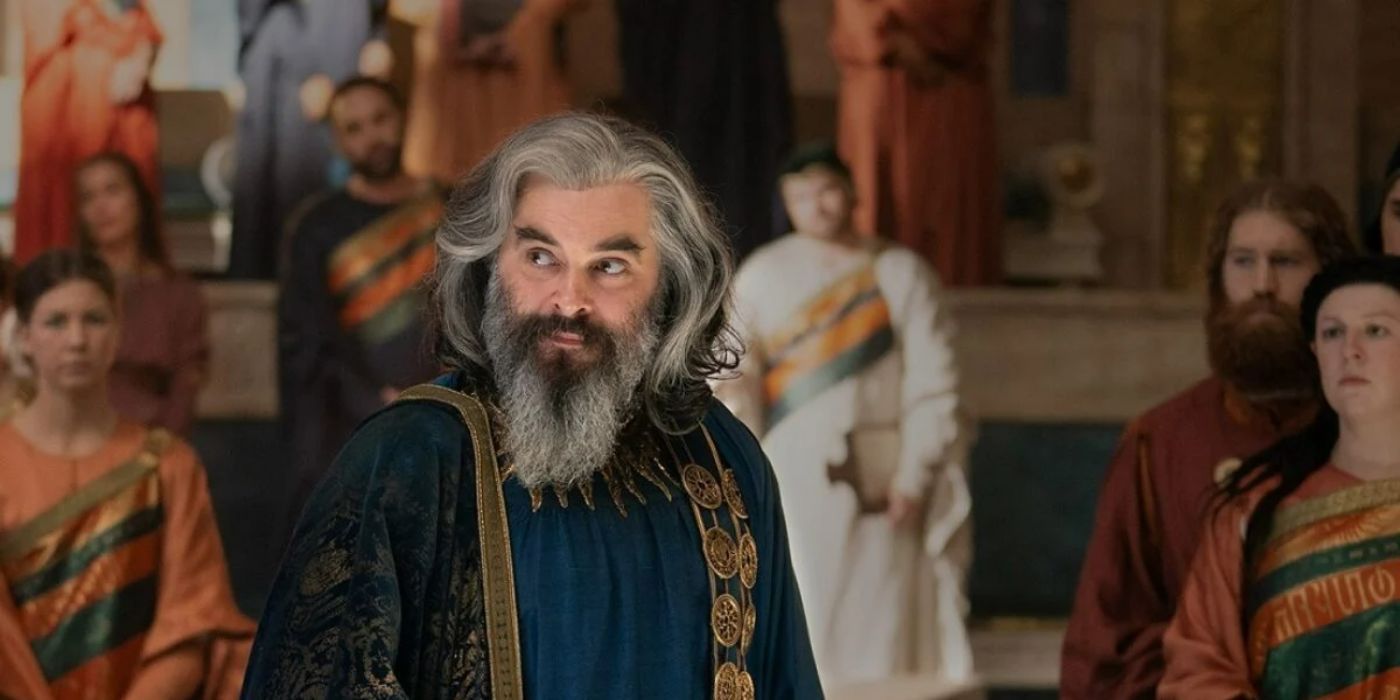
Ar-Pharazôn, an elder statesman on Númenor, is destined to bring about the Fall of Númenor. In Tolkien lore, he burned with a hunger for wealth and glory, and he became a skilled and capable war leader. Ar-Pharazôn maneuvered his way into position as ruler of Númenor, and under his reign, Númenor became increasingly hostile to elves and the Faithful who remained loyal to them. He challenged Sauron and his armies for the lordship of Middle-earth, but Sauron tricked him into bringing him back to Númenor by playing into his ego, pretending to be cowed by Ar-Pharazôn’s might.
According to Tolkien, Ar-Pharazôn became obsessed with the idea of immortality. Sauron persuaded him that this could be gained through the worship of Morgoth, leading to the construction of a temple dedicated to the first Dark Lord and the destruction of the White Tree of Númenor. None of Ar-Pharazôn’s sacrifices earned him immortality, of course, and ultimately Sauron tricked him into leading a fleet to the west in an attempt to invade the eternal lands of Valinor. Such an act was strictly forbidden by the Valar, and they responded by destroying Ar-Pharazôn’s fleet and drowning the entire island of Númenor.
It’s unclear how closely The Lord of the Rings: The Rings of Power will align with the events described in Tolkien’s notes. It’s important to note that McKay’s comments suggest the Tolkien estate wants the core of the story preserved for Sauron to be apparently defeated and taken to Númenor, and for Númenor to fall as a result. It seems likely the main story will match up closely, although Tolkien’s outline leaves a lot of room for creativity when it comes to the details.
How The Rings Of Power Adapts The Fall Of Númenor (& What Will Happen In Season 3)
Rings Of Power Season 2 Set Up Númenor’s Fall
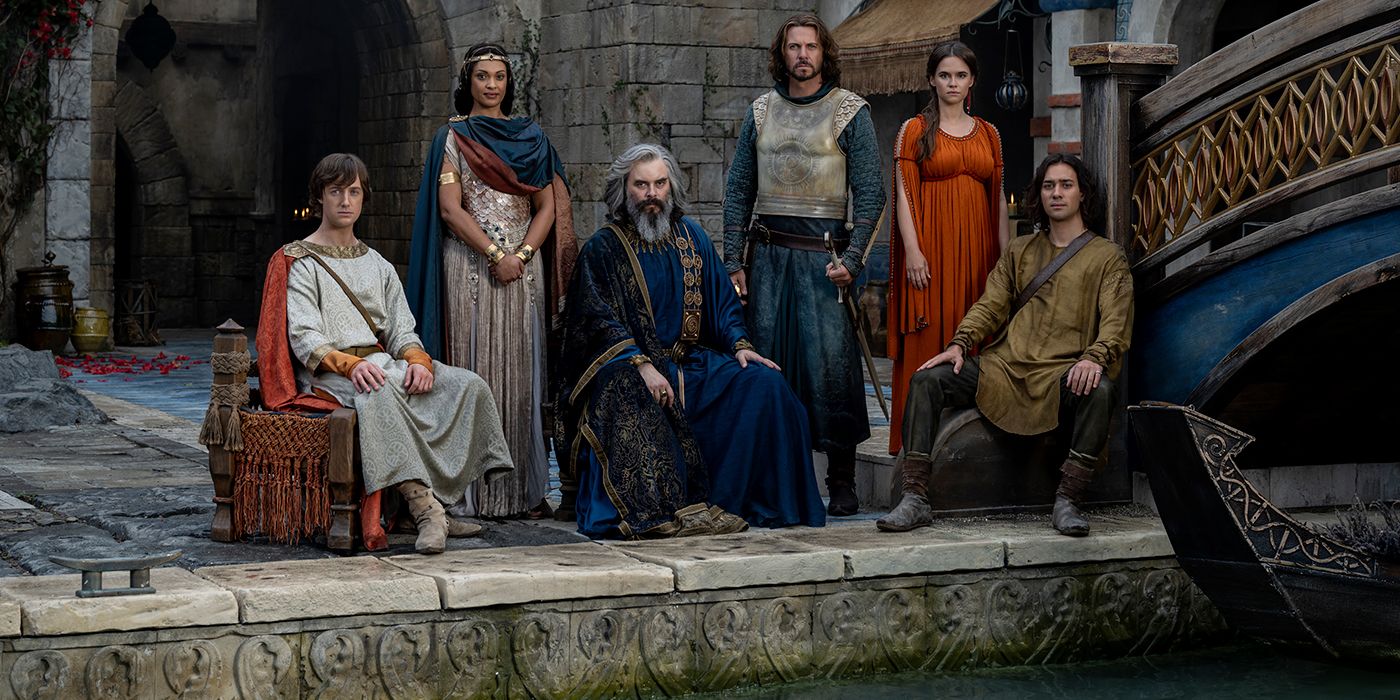
The Rings of Power’s season 1 ending set Númenor up for its eventual downfall through a political power struggle and visions foreshadowing its watery doom, which season 2 continued. The old king, Tar-Palantir, spent much of season 1 bedridden and following his death, Pharazôn increasingly destabilized his daughter, Míriel, to make way for his takeover. Míriel and Elendil are the heroes in Rings of Power’s Númenor plotline, but Míriel was weakened by her blindness. In season 2, Pharazôn plotted with Eärien and other allies to expose Míriel’s palantír use.
Palantíri are Elvish creations, and this turned a lot of Númenóreans against Míriel. Pharazôn stepped in to gain control of the kingdom, forcing the faithful to give up their military stations and arms. By the end of season 2, Pharazôn had fully seized the scepter and was trying Elendil for treason for refusing to swear loyalty to him as King. Pharazôn’s speech about life and death in season 1 suggested his interest in immortality, foreshadowing his doom. Hypocritically, Pharazôn looked in the palantír in season 2 and saw Sauron, proving that The Silmarillion’s Sauron plotline is about to transpire in season 3.
What Happens To The Númenorians After The Fall
The Legacy And Impact Of Númenor Lives On To Defeat Sauron
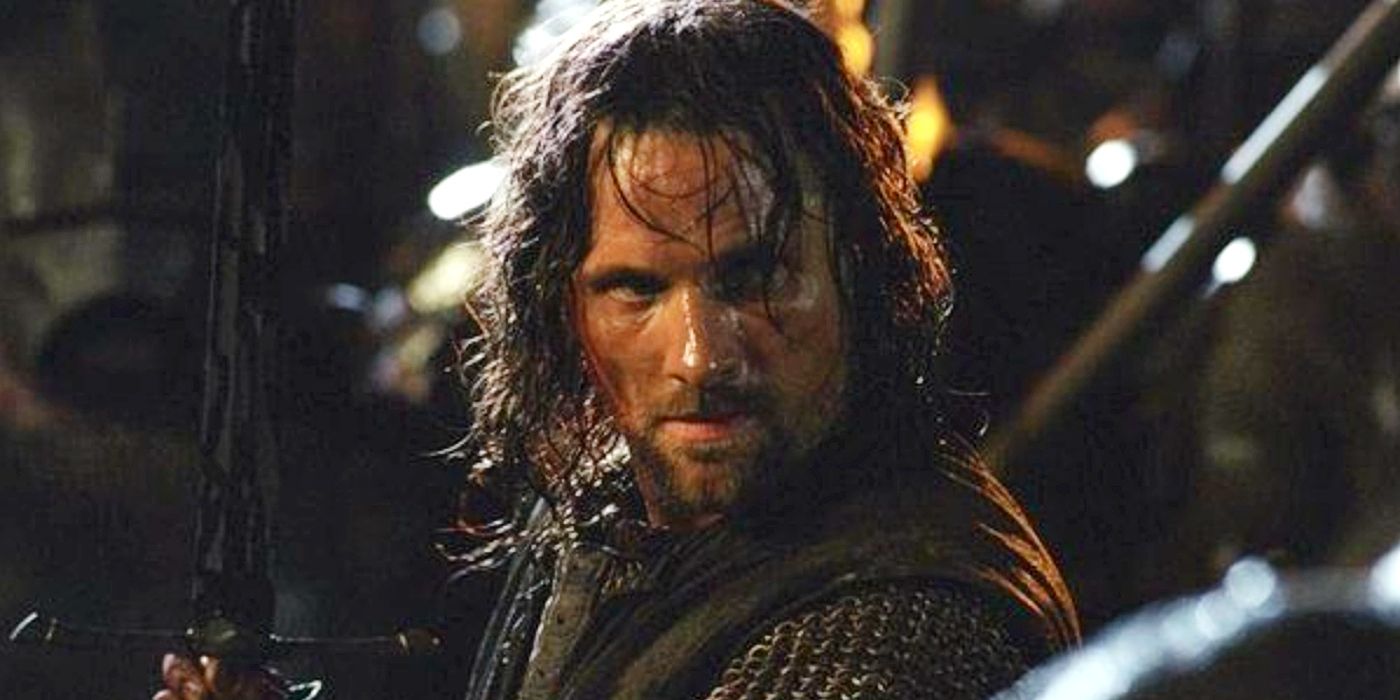
The great island of Númenor is destined to die, but it will have a legacy. Survivors of Númenor will be scattered across Middle-earth, their bloodlines mixing with those of the humans who remained there. They will establish important kingdoms of the Third Age, such as Gondor, explaining why Gondor’s Minas Tirith looks similar to Númenor. Indeed, this has already been effectively foreshadowed in The Lord of the Rings: The Rings of Power season 1, with discussion of Númenorean riders bonding with their steeds in a manner reminiscent of the famed riders of Gondor.
Númenor may be ill-fated, then, but this kingdom will have a legacy that outlives Sauron itself – for without Aragorn, it is difficult to imagine a scenario where Sauron was defeated at last. The light of Númenor will continue to shine out across Middle-earth, even when the island itself has been swallowed up by the seas. This is one of the most poignant and poetic ideas in J.R.R. Tolkien’s writings, and it’s thrilling to see it brought to life in The Lord of the Rings: The Rings of Power.
News
House of The Dragon Season 3 Will Start With This Battle From Fire & Blood
Based on Fire & Blood, fans have a good idea of how House of the Dragon Season 3 will begin. House of the Dragon Season 3 will likely begin with a major battle from Fire & Blood (the book that the show is…
House of the Dragon Season 2 Finale Fills One Major Game of Thrones Plot Hole
House of the Dragon finally confirmed who the savior of Westeros was in Game of Thrones. Although Game of Thrones ended in 2019, House of the Dragon Season 2 just filled one of the flagship show’s biggest plot holes five years later. House of…
Does JJ Die In Outer Banks Season 4? His Part 2 Fate Revealed
Outer Banks loves a twist but did that really just happen to JJ Maybank in the Part 2 Season 4 finale? Season 4 of Outer Banks delivered its biggest shocker yet, leaving audiences questioning the fate of fan-favorite Pogue, JJ Maybank. While…
Does Pope Die In Outer Banks Season 4? His Fate Revealed
Outer Banks has not been shy about killing off fan-favorite characters. Several big-name characters die in Outer Banks Season 4, but was Jonathan Daviss’ Pope one of them? Known as the brains of the Pogues operation, Daviss’ character has been a major part…
Why Did They Kill Off JJ In Outer Banks Season 4? Decision Explained
There may be more than one reason for why Outer Banks shockingly killed off JJ. Outer Banks has never shied away from putting its cast in danger, but Season 4 left fans stunned when the Netflix series killed off one of its most…
Will JJ Be In Season 5 of Outer Banks? Netflix Producer Confirms Rudy Pankow’s Character Fate
Outer Banks creators have warned fans not to expect Rudy Pankow’s JJ Maybank in Season 5. JJ’s Outer Banks story officially came to a close in Netflix’s Season 4, and it seems like that’s where it will stay. One of the series’ original Pogues, Outer…
End of content
No more pages to load
